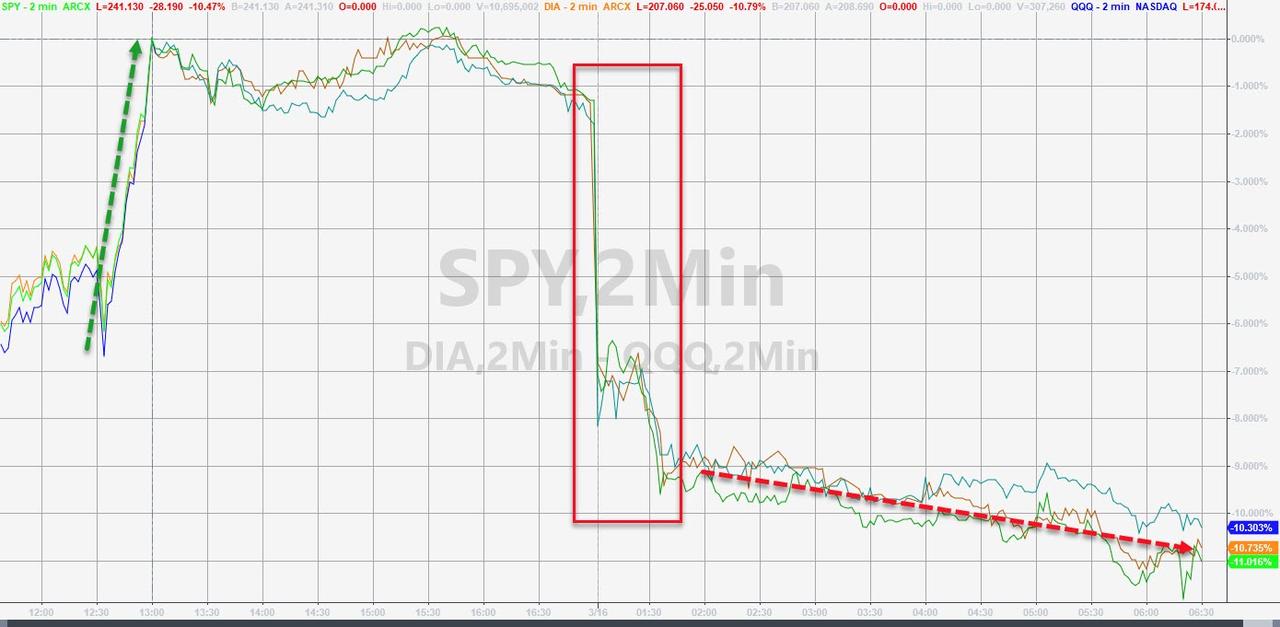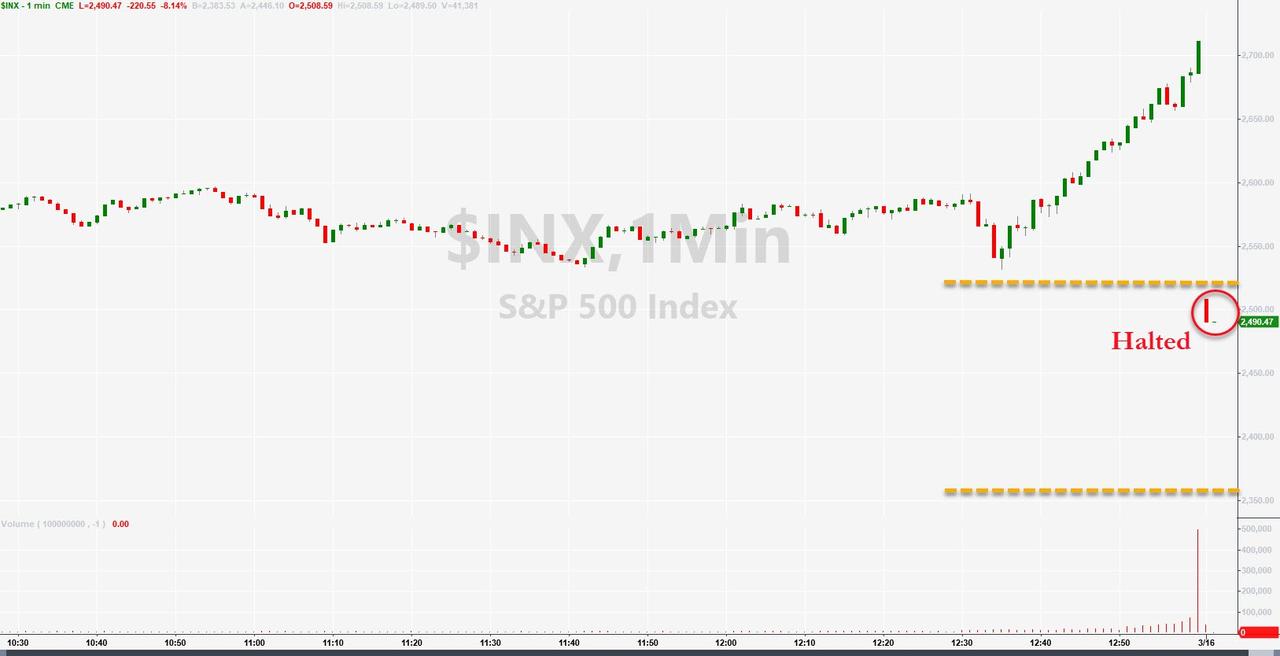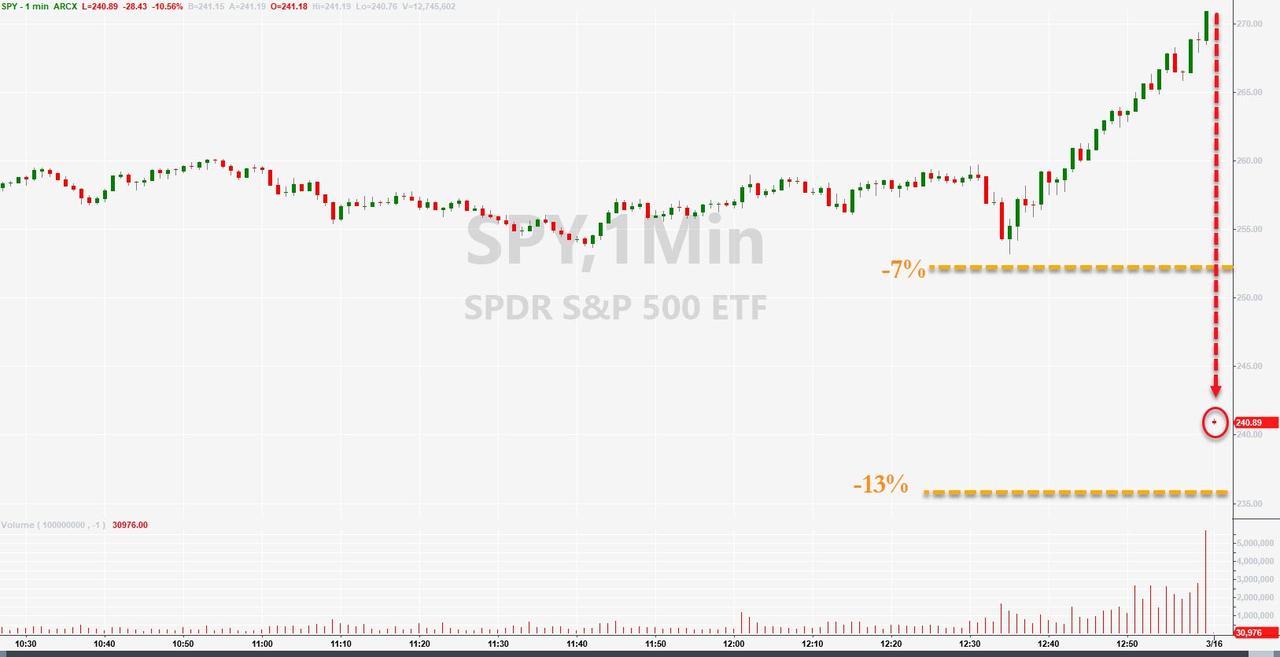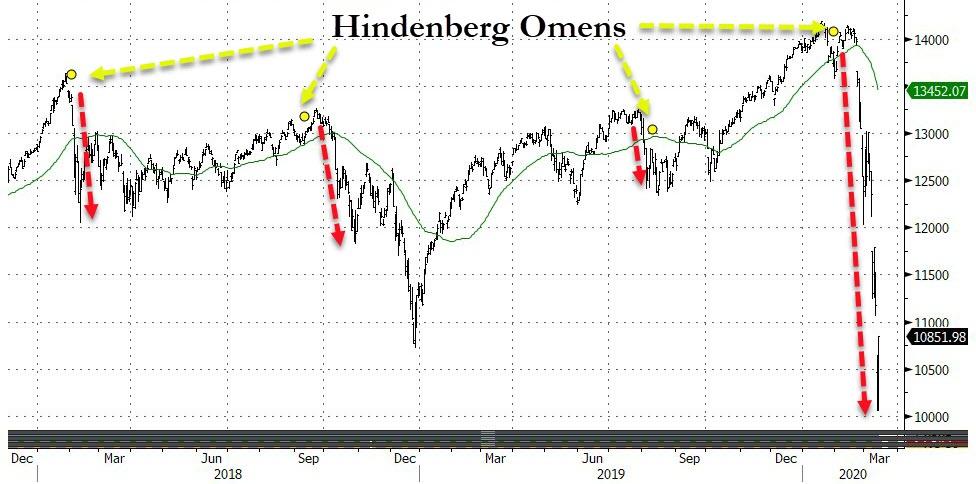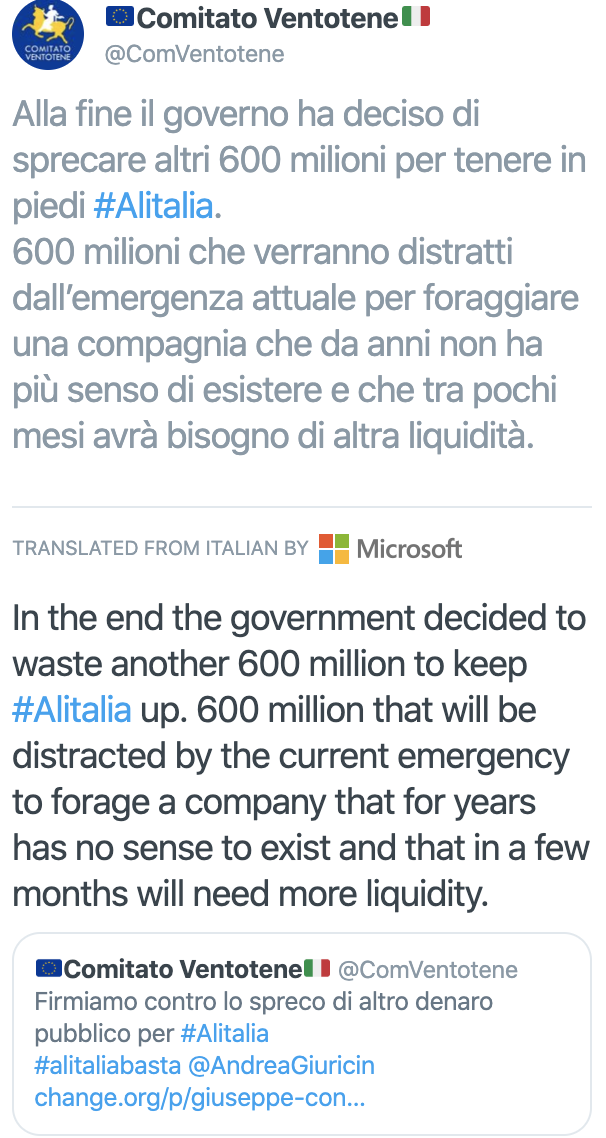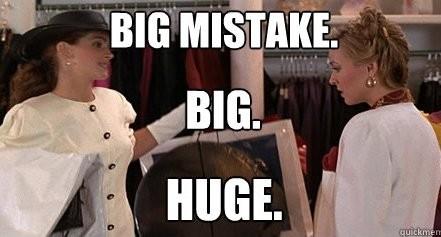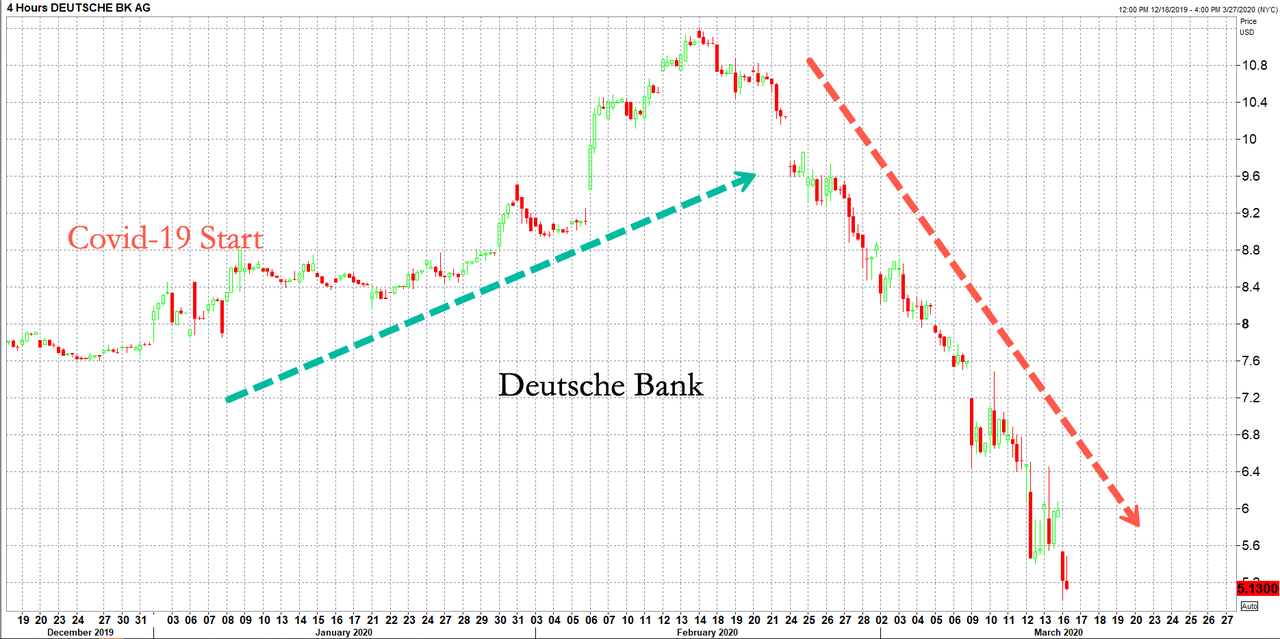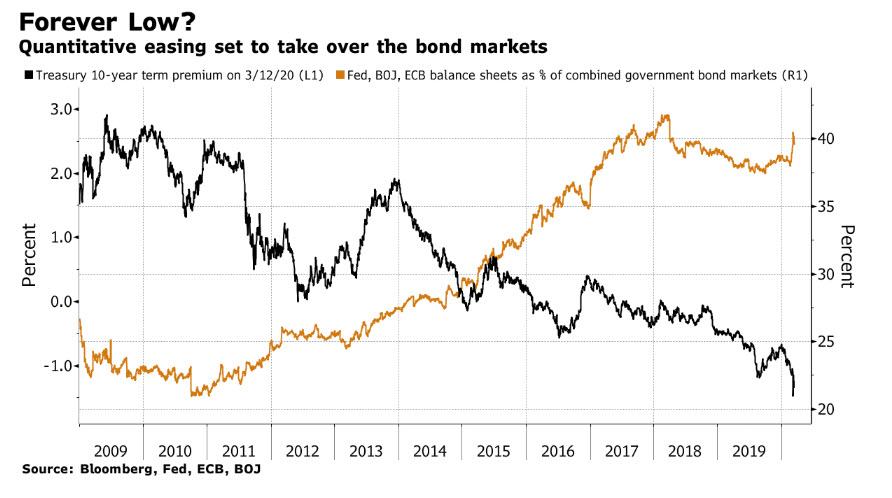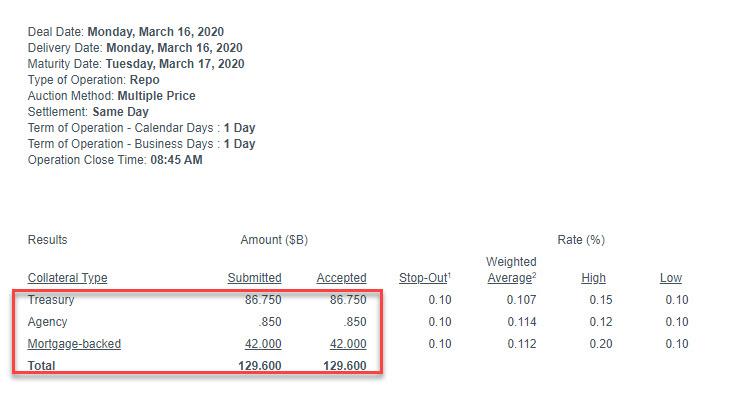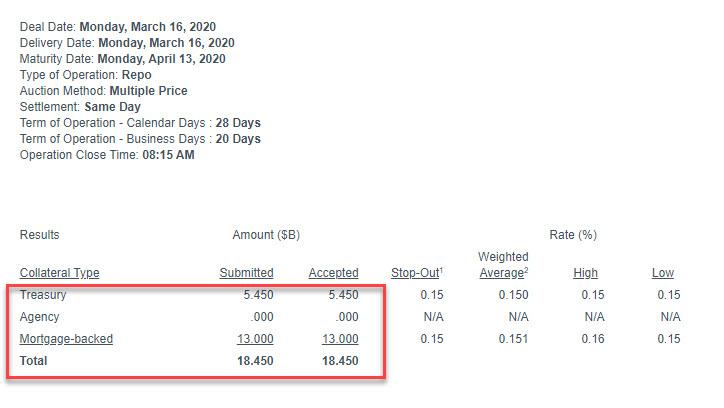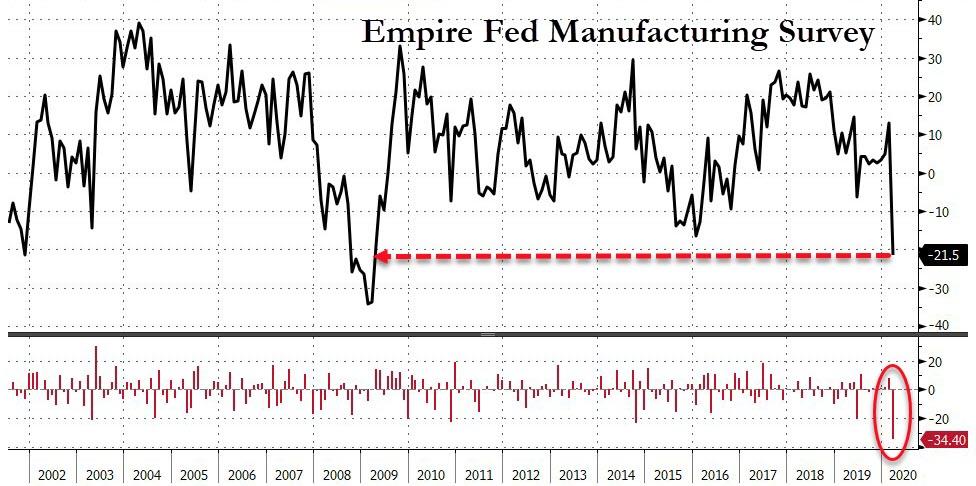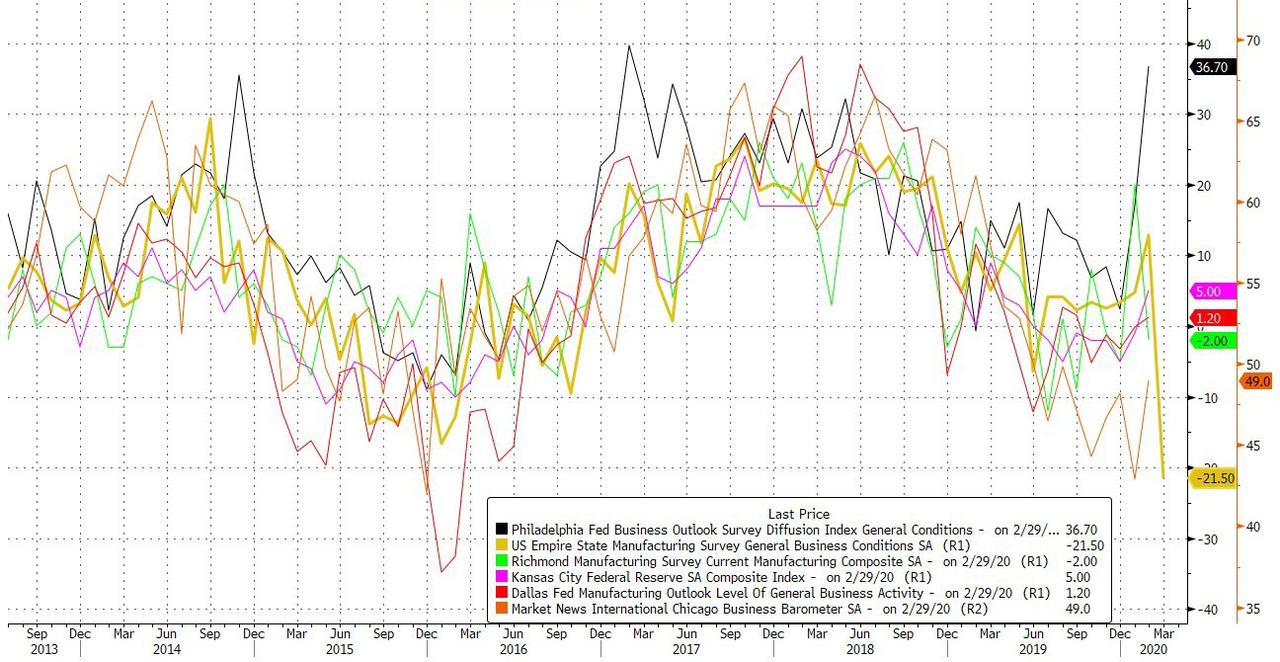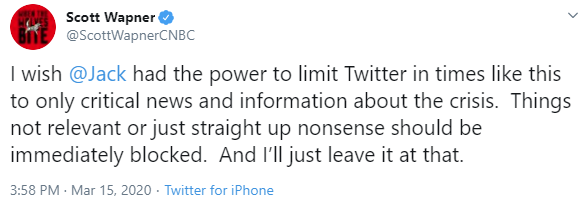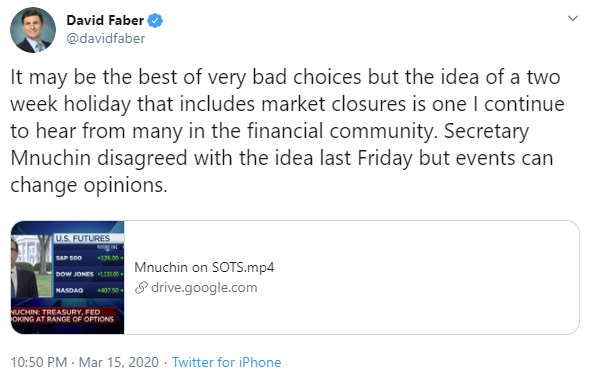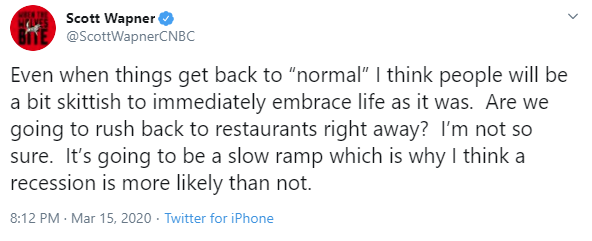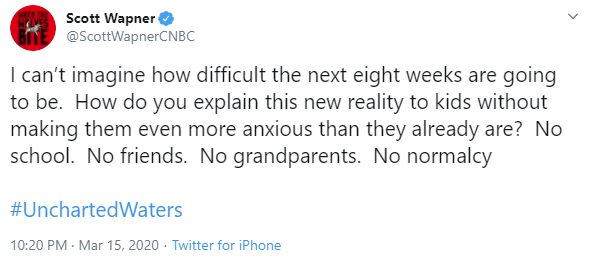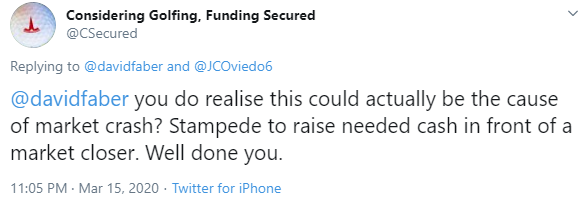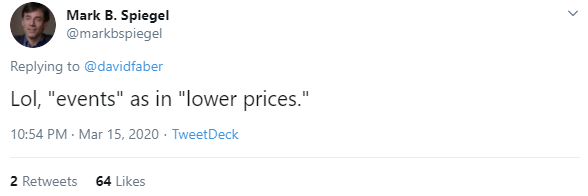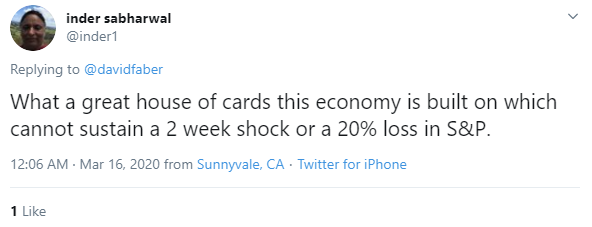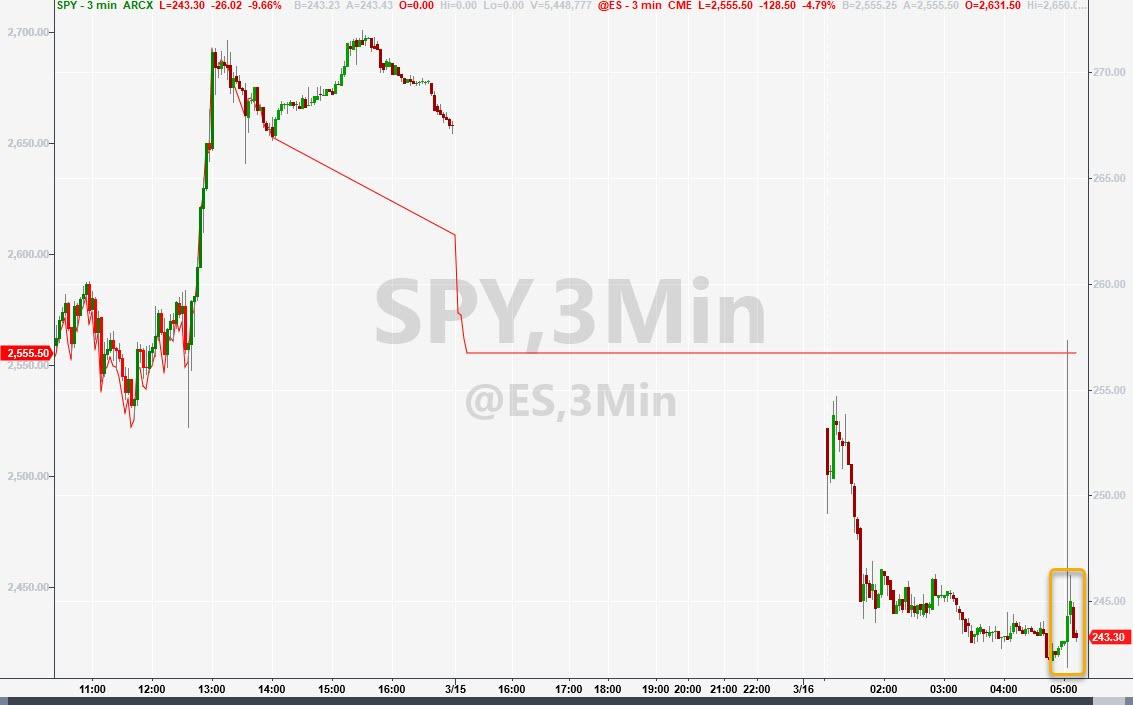“They Blew It. They Used Up All Their Ammunition”: A Stunned Wall Street Responds To The Failed Fed Intervention
Was that if for the US Federal Reserve? After 107 years of Fed history, was Sunday, March 15th the date the Fed lost its last shred of credibility as it fired its last round of ammo… and sent futures crashing limit down?
To be sure, the Fed still has a few more tricks up its sleeve – getting Congressional approval to buy stocks, coordinating with the Treasury to launch helicopter money – but all but the dumbest and most inexperienced people on Wall Street – read Millennial traders who have no idea what is going on – realize that the launch of these measures means the monetary endgame has arrived, and the time to shift away from financial assets into “hard” assets has arrived.
For a confirmation that we may have indeed entered the endgame, here are hot takes of several Wall Street pros, who have seen more than just one buyback-funded market cycle, courtesy of Bloomberg:
Michael O’Rourke, chief market strategist at JonesTrading:
“They blew it. The Fed panicked and the market is spooked. The S&P 500 registered all time highs less than a month ago and the Fed has expended all its conventional and unconventional tools. The key takeaway will be that they have truly expended all of their ammunition and this is the action of a central bank that is scared.”
James McCormick, global head of desk strategy at NatWest Markets:
“The fact is global equities are still getting slammed. It shows markets worried more about infection rates and growth and need to see a large fiscal response. Monetary policy will not have the same potency for financial markets — it is not enough on its own and there isn’t much ammunition left. The theme has been clearly on display in markets since the Fed’s first rate cut two weeks back. But this is not the end of monetary policy, not by a long shot. Fiscal policy announcements will now be watched more closely and discounted more quickly by financial markets.”
Roberto Perli, partner at Cornerstone Macro LLC:
“Overall, I believe the package is robust, but it also left something to be desired in some areas, like the unclear forward guidance and the reliance on the heavily stigmatized discount window. Nonetheless, Powell was clear that the Fed reserves the right to use other tools if appropriate.”
Peter Mallouk, president of Creative Planning, which manages about $45 billion:
“It’s largely inconsequential. The bottom line is this is a health issue. People are going to be surprised how little the economic incentives and plans are going to help until we start to see a change in the infection and death rate and I would take a 5% improvement in the war against the coronavirus over a 100% move in terms of economic incentives and initiatives.”
Mark Haefele, CIO, UBS Global Wealth Management:
“Broad fiscal spending and rate cuts are blunt instruments for dealing with the short-term economic impact of the virus, but should provide investors with some confidence that growth can be strong once the recovery gets underway. We expect the market to end the year at much higher levels than today, with China’s economy leading the way to recovery and the U.S. and European economies rebounding in the third quarter.”
Jeff Mills, chief investment officer of Bryn Mawr Trust:
“They had no choice, but it won’t be enough in the grand scheme of things. We need large fiscal programs, which based on the recent communication from the Treasury secretary it seems clear we will be getting. If we get the fiscal stimulus side of the equation, the eventual recovery will likely be more robust than it would be otherwise.”
Alicia Levine, chief strategist, BNY Mellon Investment Management:
“The Fed is leading global central banks. The mixture of policy action exceeds market expectations and, importantly, will help corporate credit markets as it unleashes a flood of liquidity. The disquieting message from last week’s market moves in the credit and Treasury markets was the contraction of liquidity and this action should help calm that dislocation. Expect the Treasury yield curve to steepen on this action.”
Joachim Fels, global economic adviser at Pacific Investment Management Co.:
“A global recession in response to a combination of a supply disruptions and a sudden stop of demand for (mostly) services appears to be a foregone conclusion. The Fed’s actions will help to restore an orderly functioning of the very core of the U.S. financial markets: the Treasury market and the U.S. mortgage market. All said, policy makers including the Fed are in the process of pulling all the stops to mitigate the severe economic and financial disruptions caused by the most severe global health crisis in more than a century. More will be needed and will likely be forthcoming over the next few weeks and months.”
Ian Lyngen, head of U.S. Rates strategy at BMO Capital Markets:
“The coordinated action between the Fed/BoE/BoJ/ECB/SNB/Bank of Canada to lower the price on the central bank swap lines should help ease overseas funding stress by both reducing the cost of dollars for foreign banks, but also by adding the 84-day maturity option — in addition to the 1-week currently. This should help reduce the probability of global funding squeeze — whether it will be enough will be determined in the coming days.”
Krishna Guha, head of central bank strategy at Evercore ISI:
“Equity market futures continued to tumble following the announcement as he spoke. This troubling reaction likely reflects some combination of buy the rumor/sell the news from Friday, concern that the Fed has fired its bazooka and fiscal needs to step up too if this is to work, and missing elements on the liquidity/credit front. The Fed cannot do a lot about the first two but it can and should address the third. In our view the absence of TAF cash auctions and emergency 13(3) lending programs to shore up the credit markets starting with a CPFF backstop for commercial paper leaves the powerful package incomplete.”
Jason Daw, a strategist at Societe Generale:
“In normal circumstances, a large policy response like this would put a floor under risk assets and support a recovery. However, the size of the growth shock is becoming exponential and markets are rightfully questioning what else monetary policy can do and discounting its effectiveness in mitigating coronavirus-induced downside risks.”
Source: Bloomberg
Tyler Durden
Mon, 03/16/2020 – 09:45
via ZeroHedge News https://ift.tt/2vmlTTQ Tyler Durden
